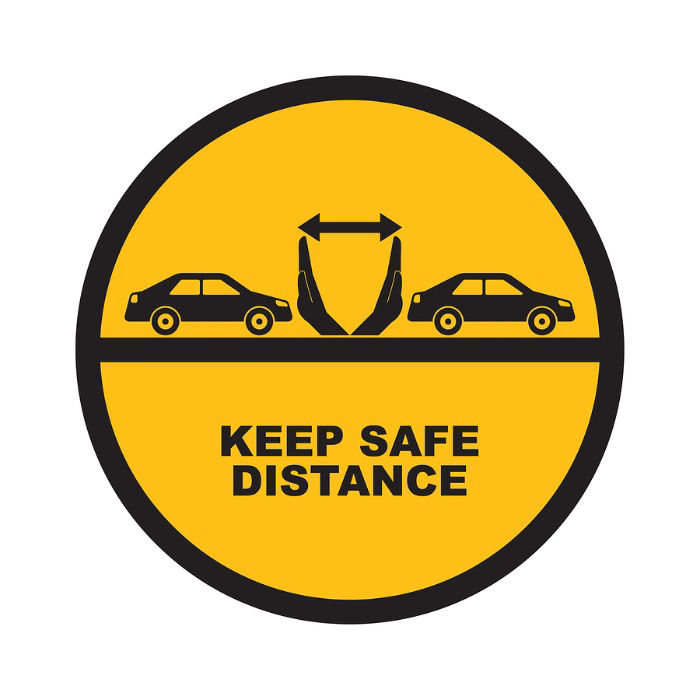NHSA Blog
Blog posts of '2022' 'December'
What Factors Can Help Determine a Safe Following Distance?

Some drivers may feel that if you are staying alert, scanning the road for hazards, and driving at the posted speed limit that it doesn’t matter how closely you drive behind another vehicle. Every time you drive, you must pay attention to how much space you are leaving in front of and beside your vehicle. If you make a habit of following other vehicles too closely, you may not be able to avoid an accident if the driver in front of you hits their brakes suddenly. To determine how much space is needed, you must consider the following factors.
Weather
Is snow or rain causing the road to be slick? Is your visibility limited by rain or fog? Keep alert to changing weather conditions that could slowly affect safe driving conditions.
Time of day
Are you traveling in a direction that leaves you with the sun glaring in your eyes? Or, if it is dark outside, do the headlights of oncoming vehicles make it difficult for you to see? Animals can be difficult to spot at night or on narrow country roads, especially at dusk.
Traffic conditions
Is traffic heavy? Is there anything in the road ahead that could cause the vehicle in front of you to stop abruptly? Is there merging traffic that will bring more vehicles into your path? Good driving habits involve constantly scanning your surroundings and keeping an eye for safe paths if something requires you to react suddenly to avoid objects, animals or even pedestrians or other motorists.
While this is not an exhaustive list of factors that can affect how you determine a safe following distance, it can help to be mindful of ever-changing driving situations that must be considered.
At NHSA, our goal is to provide online driver education courses that equip all drivers with what they need to be safe drivers. Whether you are a teen seeking a learner’s permit, or an adult driver seeking a basic driver safety course, check us out online to see what courses are available in your state!
Older Driver Safety Awareness Week Safety Tips

According to data collected by the National Highway and Traffic Safety Administration (NHTSA), in 2020 over 17% of all traffic fatalities involved persons over 65 years of age. Recognizing potential factors that can increase risks and taking steps to reduce them will help keep more people safe on the road.
We don’t mean to depress you or to suggest that you no longer can drive safely after a certain age. However, it is important to have an honest and modest evaluation of each individual's circumstances to help determine when it may be best not to drive or to at least wait until a safer option is available.
Medication. Sadly, as we age it is more and more likely that we'll rely on some form of over-the-counter or prescription medication to increase the quality of our life. Are there clear warnings on such medication that describe potential risks to driving? Could it make you sleepy or less alert to your surroundings? Could it affect your response time or other important factors in your driving?
Vision. Proper vision is essential to driving safely. Even if we have corrective lenses or wear glasses, we may reach a point where we can no longer see clearly enough to safely operate a vehicle. Make sure you regularly care for your vision health to receive the best quality treatment to ensure you are still fit to drive.
Pain. Even if we do not take medication that can reduce our alertness or reaction time, we may deal with a variety of conditions that can cause us pain. Pain is a powerful distraction that can prevent us from being fully in tune with our surroundings. If the pain you are dealing with is enough to distract you, perhaps ask a friend or relative to drive you where you need to go. Or, maybe you can be flexible with your obligations and plan them on days that you are in a better condition to drive.
Response time and mobility. As we age, we tend to slow down in our response time or even in our physical abilities. Good driving habits include scanning for potential dangers ahead, keeping a safe following distance, and having an exit plan if we need to quickly react to avoid a road hazard. These steps are even more critical for older drivers who may suffer from some of the aforementioned challenges. These safe driving habits will help to limit the risks even if our reaction time is reduced. Mobility is an essential trait of a safe driver. Being able to abruptly turn the steering wheel or firmly step on the brake are key steps in avoiding accidents. Have regular visits to your health professional who can test your mobility to confirm you are in a position to drive safely or to quickly detect and address potential conditions that may put your ability to drive at risk.
While this is not an exhaustive list for older drivers to take into consideration, it can serve as a helpful tool to identify driving risk factors and plan for them accordingly. At NHSA, our goal is to provide online driver education courses that equip all drivers with what they need to be safe drivers. We have mature driver insurance discount courses available in most states. We are confident that this course can assist older drivers to stay independent and safe behind the wheel!

